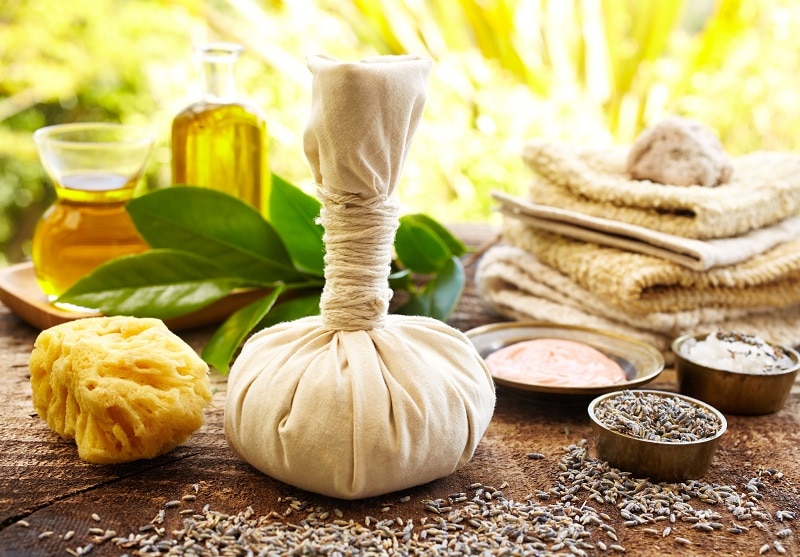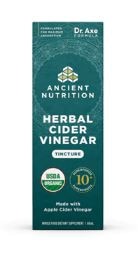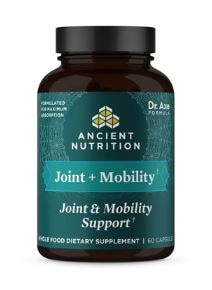Summary: Curious about what a poultice is and how it works? This centuries-old remedy combines herbs, salts or clays into a soothing paste that’s wrapped in cloth and placed on the skin to ease soreness, swelling or congestion. You’ll discover how to make a poultice using ingredients like onion, ginger and turmeric, plus tips for choosing herbs, applying them for various conditions and crafting your own poultice at home with an easy recipe.
In a world full of creams and capsules, sometimes the best comfort comes from plants. If you’ve been curious about what a poultice is, you’ll find it’s one of the easiest traditional remedies to make at home.
A poultice is a combination of natural ingredients – such as herbs, salts and essential oils – wrapped in thin cloth and placed on the body as a remedy for pain, inflammation, sores, wounds or even cold symptoms. An onion poultice can help alleviate flu-like symptoms, including coughing and congestion. To make an onion poultice, the ingredients below are lightly sautéed, wrapped in a thin cloth and placed on the chest for 30 minutes. Breathe in the aromatics and let nature’s medicine absorb into the skin.
This traditional approach is valued by many who seek alternative medicine and holistic healing, since it promotes gentle relief without synthetic chemicals. While various herbs and plant-based remedies have long histories in homeopathy, the poultice stands out for its ease of preparation and versatility in addressing different ailments. Moreover, using a poultice at home empowers individuals to take an active role in their wellness journey and explore the benefits of nature-based remedies.
Herbs & ingredients for poultices
When learning how to make a poultice, choosing the right ingredients is key. The base can include fresh or dried herbs, salts, clays, and even foods with soothing properties. Common herbal options include:
Onion – Often used for respiratory support and to help relieve chest congestion.
Ginger – Known for its warming qualities that may ease muscle soreness or joint stiffness.
Turmeric – Contains curcumin, which has anti-inflammatory properties.
Comfrey – Traditionally applied to support wound healing and bruises.
Plantain leaves – Commonly used for insect bites, minor cuts, and skin irritation.
Epsom salt or bentonite clay – Helps draw out impurities and soothe swollen areas.
When making a poultice, you’ll typically mash or grind the herbs with a small amount of warm water, oil, or vinegar until a thick paste forms. This mixture can then be spread onto a thin piece of cloth (like cheesecloth or cotton), folded, and applied directly to the skin.
Application techniques for various conditions
Now that you know what a poultice is and the types of ingredients you can use, the next step is understanding how to apply it effectively. The method can vary depending on the area of the body and the concern you’re targeting:
For chest congestion or colds: Apply a warm onion or mustard poultice to the chest or upper back for 20–30 minutes to help open airways and ease coughing.
For sore muscles or joints: A ginger or turmeric poultice may provide warming comfort. Keep the poultice in place for 30–45 minutes, then rinse with warm water.
For wounds or insect bites: Cooling herbs like plantain or comfrey can be applied directly over the area to soothe irritation and promote recovery.
For swelling or inflammation: Clay- or salt-based poultices are often used to help draw out fluid and reduce puffiness.
It’s important to test a small area of skin first to ensure no irritation occurs. Poultices are meant for external use only and should not be applied to open or severe wounds without professional guidance.
The takeaway
Understanding what a poultice is opens the door to a simple, time-honored way of supporting wellness with ingredients from nature. Whether you use herbs, clays, or kitchen staples, this gentle practice encourages a hands-on approach to self-care. Once you learn how to make a poultice, you can adapt it for different needs—from easing sore muscles to soothing skin or calming congestion. While it’s not a replacement for professional medical treatment, a poultice can be a comforting, nature-inspired remedy to keep in your wellness toolkit.

DIY Onion & Herb Poultice
Ingredients
- 1 tsp. coconut oil
- 2 Tbsp. turmeric freshly grated or chopped
- 2 Tbsp. lemongrass chopped
- 2 Tbsp. fresh ginger grated or chopped
- 2 garlic cloves chopped
- 1/2 cup small onion sliced
- 10 drops eucalyptus essential oil
- 2 drops oregano essential oil
- White cloth or muslin
Optional: yarn or thick thread
Instructions
-
In a pan on low heat, add coconut oil and lightly sauté ginger, turmeric, lemongrass, onion and garlic. Cover for a few seconds to let steam. (Note: Ingredients should be only slightly moist from coconut oil. Use a sparing amount of water to avoid burning.)
-
Turn off heat and let ingredients cool in separate bowl.
-
Add essential oils and stir to combine.
-
Lay out cloth. Place a large spoonful of mixture in the center of your cloth.
-
Gather outside pieces of cloth to contain herbal mixture inside cloth. If desired, tie the top with yard or thread to keep closed. (Note: You’ll want ingredients to stay in the cloth while in use.)
-
Place poultice on affected area 20–30 minutes two or three times a day.
-
Store in the fridge and reheat in a steamer or microwave. Can be used four or five times before discarding.
Frequently Asked Questions
How long should I leave a poultice on?
Most poultices are left on for about 20 to 45 minutes, depending on the ingredients and the purpose. A warming poultice (like ginger or mustard) may only be needed for a short time, while cooling or clay-based poultices can stay on a bit longer. Always monitor how your skin feels and remove the poultice if you experience discomfort.
Can you put a poultice on without wrapping?
It’s best to wrap a poultice in a thin, breathable cloth—such as cotton or cheesecloth—before applying it to your skin. This keeps the mixture contained, prevents irritation, and makes cleanup easier. Direct contact isn’t usually recommended, especially with stronger herbs or ingredients.
Is Epsom salt a poultice?
Epsom salt on its own isn’t a poultice, but it can be used in one. When combined with warm water to form a paste and wrapped in cloth, Epsom salt can create a soothing poultice that helps reduce swelling and draw out impurities.
Is baking soda a poultice?
Yes, baking soda can be used as the base for a simple poultice. Mixed with a little water, it can help calm insect bites, minor skin irritation, or stings. Like other natural remedies, it’s meant for temporary use and should be rinsed off after 15–20 minutes.
What is a poultice massage?
A poultice massage combines the principles of traditional poultice therapy with bodywork. Herbal poultices—often filled with warming herbs like lemongrass, turmeric, or ginger—are heated and pressed or rolled along the body to promote relaxation, improve circulation, and ease tension. This technique is popular in Thai and Ayurvedic practices.



